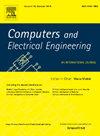Towards a physical imaging-driven sparse attention dehazer for Internet of Things-aided Maritime Intelligent Transportation
IF 4
3区 计算机科学
Q1 COMPUTER SCIENCE, HARDWARE & ARCHITECTURE
引用次数: 0
Abstract
In the field of Maritime Intelligent Transportation Systems (MITS), the integration of Internet of Things (IoT) technologies and intelligent algorithms has revolutionized visual IoT-aided MITS. This integration, enabled by advanced communication technologies, network infrastructures, sensor capabilities, and data science methodologies, has significantly enhanced monitoring, navigation, and collision avoidance systems, thus improving waterway transportation efficiency. However, the performance of these systems can be hampered by atmospheric conditions, leading to degraded imaging quality characterized by contrast reduction, color distortion, and object invisibility. Such challenges impede critical vision-based tasks like object detection, tracking, and scene understanding in MITS. To address the performance gap between clear and hazy scenes, we propose a novel framework called PSDformer. This framework integrates Top-K Sparse Attention with a Physics-Aware Feed-Forward Network to enhance performance under hazy conditions. Additionally, we introduce a novel paired data generation method to reduce the disparity between synthetic and real-world data. Experimental results on synthetic and real-world datasets demonstrate that PSDformer outperforms existing state-of-the-art methods in both qualitative and quantitative evaluations. Importantly, its exceptional dehazing capability significantly improves detection accuracy under adverse hazy conditions, thereby addressing a critical challenge in visual IoT-aided MITS.
面向物联网辅助海上智能交通的物理图像驱动稀疏注意力消除器研究
在海上智能交通系统(MITS)领域,物联网技术和智能算法的融合为视觉物联网辅助的MITS带来了革命性的变化。通过先进的通信技术、网络基础设施、传感器能力和数据科学方法,这种集成大大增强了监测、导航和避碰系统,从而提高了水路运输效率。然而,这些系统的性能可能会受到大气条件的阻碍,导致成像质量下降,其特征是对比度降低、色彩失真和物体不可见。这些挑战阻碍了关键的基于视觉的任务,如MITS中的目标检测、跟踪和场景理解。为了解决清晰和模糊场景之间的性能差距,我们提出了一个名为PSDformer的新框架。该框架将Top-K稀疏注意与物理感知前馈网络相结合,以提高模糊条件下的性能。此外,我们还引入了一种新的配对数据生成方法,以减少合成数据与真实数据之间的差异。在合成和现实世界数据集上的实验结果表明,PSDformer在定性和定量评估方面都优于现有的最先进的方法。重要的是,其卓越的除雾能力显著提高了不利雾霾条件下的检测精度,从而解决了视觉物联网辅助MITS的关键挑战。
本文章由计算机程序翻译,如有差异,请以英文原文为准。
求助全文
约1分钟内获得全文
求助全文
来源期刊

Computers & Electrical Engineering
工程技术-工程:电子与电气
CiteScore
9.20
自引率
7.00%
发文量
661
审稿时长
47 days
期刊介绍:
The impact of computers has nowhere been more revolutionary than in electrical engineering. The design, analysis, and operation of electrical and electronic systems are now dominated by computers, a transformation that has been motivated by the natural ease of interface between computers and electrical systems, and the promise of spectacular improvements in speed and efficiency.
Published since 1973, Computers & Electrical Engineering provides rapid publication of topical research into the integration of computer technology and computational techniques with electrical and electronic systems. The journal publishes papers featuring novel implementations of computers and computational techniques in areas like signal and image processing, high-performance computing, parallel processing, and communications. Special attention will be paid to papers describing innovative architectures, algorithms, and software tools.
 求助内容:
求助内容: 应助结果提醒方式:
应助结果提醒方式:


